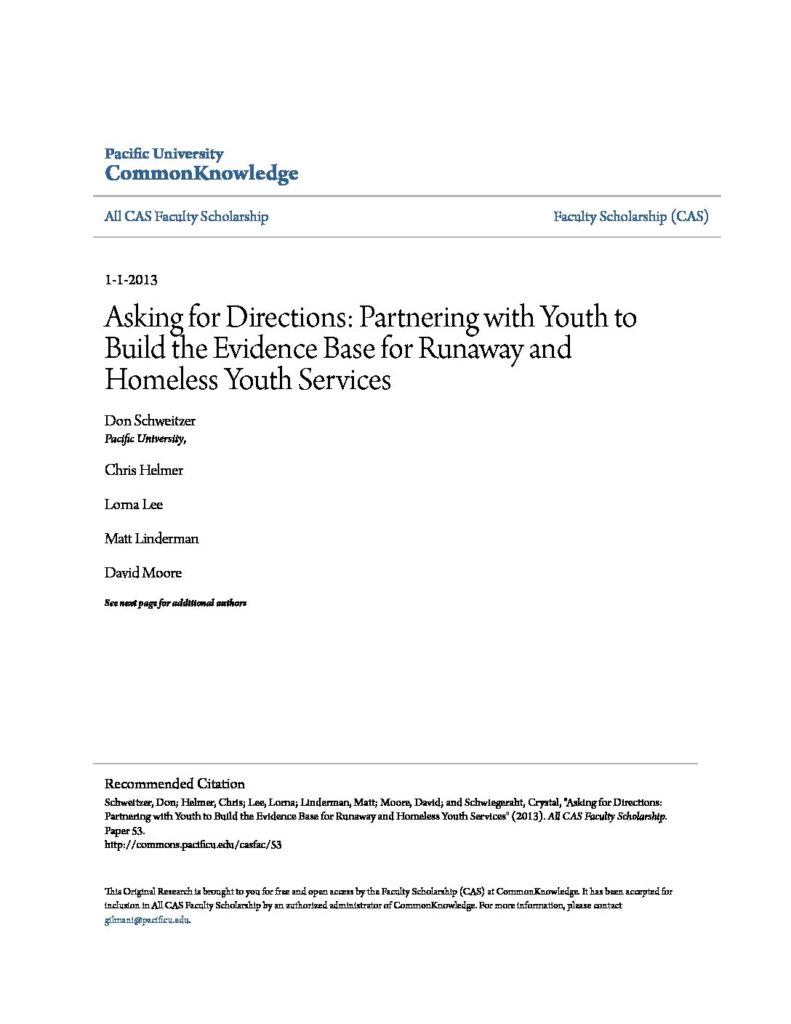
Asking for Directions: Partnering with Youth to Build the Evidence Base for Runaway and Homeless Youth Services
Summary
The complexities associated with the RHY population such as age, pathways to running away and/or homelessness, mental health, abuse, neglect, etc. make this a challenging field to work in. Yet understanding these complexities and evaluating the interventions used by community social service programs designed to help youth return home, or enter other safe, stable housing, is critical to helping this field develop and improve interventions, programs, and prevention strategies that will be used by this uniquely vulnerable population.
This project suggests that if to understand the complexities of these youth and move toward a system with improved utilization rates, we should begin by asking – what are programs doing that work for RHY? Which services or practices do the youth feel are most helpful? Is there a way to synthesize these practices, codify them, and begin to build the evidence base for working effectively with RHY?
This study began this process by conducting 14 focus groups with 52 youth ages 14 – 21, who were receiving services from a Basic Center (3), a drop-in center (3), a street outreach program (2), or a Transitional Living Program (6), and asking them what is it about this program that works for you? Then the researcher hired RHY to analyze those responses. Findings hold the potential to begin filling the chasm that exists in the literature around effective practice with RHY.
Discussion
Users can discuss this report and make suggestions for future updates. You must be signed in to submit a comment.
No comments
Join the conversation and
Become a Member Existing member loginbecome a member.